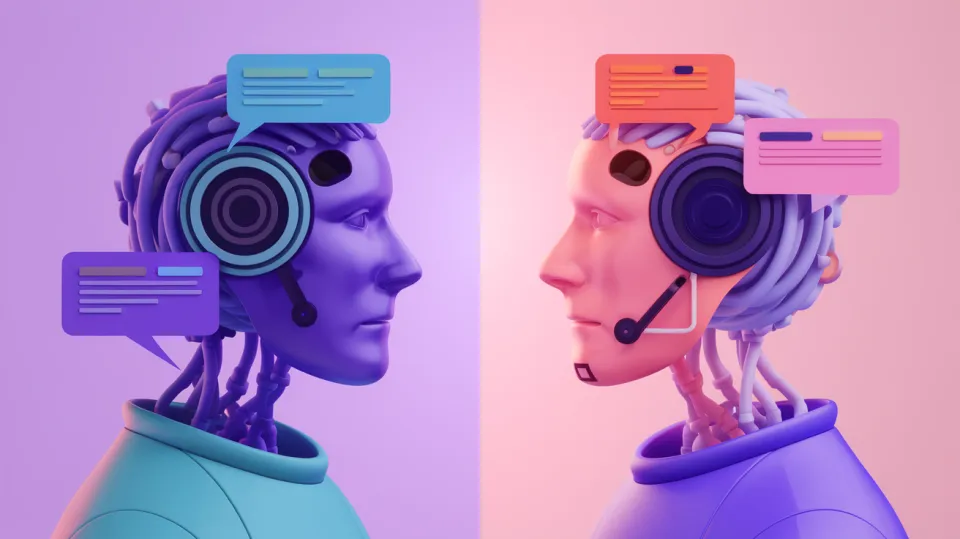Generative Conversational Interface

A conversational interface is a machine learning-powered system that enables natural language interactions between humans and machines. I want to focus on the generative conversational interfaces which leverage advanced generative language models to process input prompts, interpret intent and generate contextually relevant responses.
A key distinction to understand is between the underlying large language models (LLMs) and the productized conversational interfaces built on top of them. Companies like OpenAI, Anthropic and Google develop sophisticated LLMs as the foundation for their generative AI systems. These LLMs are then packaged into user-friendly interfaces to create products like ChatGPT, Claude, or Gemini.
The LLMs themselves are the core AI models trained on vast amounts of data to understand and generate human-like text. They serve as the "brain" behind the conversational interfaces. On the other hand, the productized interfaces provide a way for users to interact with these models through chat windows, voice assistants, or other user-friendly formats.
Open vs Closed Source Models
Open source models like those from Meta (LLaMA) and Mistral are publicly available allowing developers to inspect modify and deploy the models freely. This enables greater transparency customization and community-driven improvements.
In contrast closed source models from OpenAI (GPT series) and Anthropic (Claude) are proprietary with restricted access. While these offer state-of-the-art performance their inner workings remain opaque.
Cloud vs Local Deployment
Cloud-based models like Claude and GPT-4o run on remote servers requiring an internet connection for inference. This allows for massive scale but may introduce latency and privacy concerns.
In addition to consumer-facing products, many generative AI companies also offer cloud-hosted API access to the larger models. This allows software developers to integrate the LLM capabilities directly into their own applications and services. Including customized versions of their own productized conversational interfaces.
Through APIs, businesses can leverage the power of these advanced language models without having to host or maintain the infrastructure themselves.
As I said earlier, while some companies keep their LLMs proprietary, others have embraced an open-source approach. This creates a spectrum of accessibility and customization options for developers and researchers working with these technologies.
Locally deployed models such as smaller versions of LLaMA or Mistral's models can run on portable devices or on local infrastructure. This enables offline use, lower latency and greater data control, but may sacrifice some performance due to size and processing constraints.
Prompt Processing and Vector Representations
Regardless of their source or deployment method these conversational interfaces typically process user prompts by converting them into vector representations - numerical encodings of the semantic meaning of the text. These vectors allow the model to understand the context and intent behind user queries.
The model then performs inference using these vector representations comparing them against its trained knowledge to generate appropriate responses. This process enables the interface to understand complex queries and produce human-like responses.
Reasons for Hallucinations
Despite their advanced capabilities, conversational interfaces can sometimes produce inaccurate or nonsensical outputs, a phenomenon known as "hallucinations." Hallucinations occur when the model generates information that is not grounded in its training data or external knowledge. Several factors contribute to this issue:
- Limited Training Data: The model's training data may not cover all possible scenarios or contain outdated information, leading to inaccuracies.
- Ambiguity in User Queries: If a user query is ambiguous or lacks context, the model might fill in gaps with incorrect assumptions.
- Overgeneralization: Language models may overgeneralize from their training data, applying patterns inappropriately to new contexts.
- Complexity of Inference: The inference process itself can introduce errors, especially when the model attempts to balance multiple possible interpretations of a query.
Role of RAG in Accuracy
Retrieval-Augmented Generation (RAG) plays a crucial role in enhancing the accuracy of conversational interfaces. RAG combines the generative capabilities of language models with the ability to retrieve relevant information from external knowledge bases. By integrating retrieval mechanisms, RAG ensures that the responses are not only contextually relevant but also factually accurate. This approach helps mitigate hallucinations by grounding the model's outputs in up-to-date and specific information.
In this blog, I want to outline the ways that document retrieval is being used today to increase the reliability of conversational interfaces. We will walk through the technical elements, helping readers understand how developers are actively working to reduce hallucinations and improve the overall performance of these systems.
See you tomorrow!




